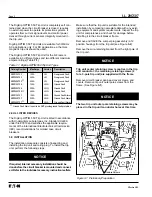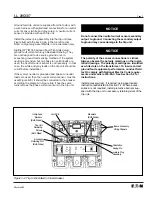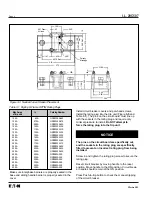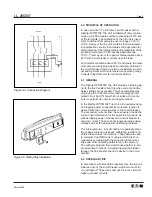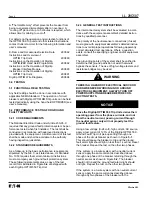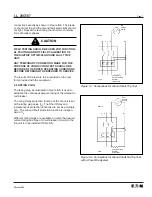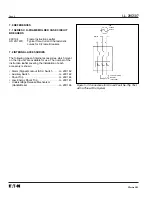
4.0 PRINCIPLE OF OPERATION
In open air at 40°C, a K-Frame circuit breaker with a
Digitrip OPTIM 550 Trip Unit installed will carry continu-
ously up to 400 amperes without exceeding a 50°C rise
at the terminals. The calibration of the trip unit is insen-
sitive to ambient temperatures over a range of -20° to
+55°C. However the trip unit contains thermal tempera-
ture protection circuitry that initiates a trip operation for
self-protection if the internal ambient temperature at the
printed circuit board (PCB) reaches approximately
100°C. This may occur for open air temperatures above
40°C with circuit breaker currents near full load.
For ambient conditions above 40°C and where the maxi-
mum ampere rating plug has been installed, derating of
the circuit breaker frame should be considered to avoid
exceeding a safe terminal temperature operating range.
Consult Cutler-Hammer for recommendations.
4.1 GENERAL
The Digitrip OPTIM 550 Trip Unit provides a tripping sig-
nal to the flux transfer shunt trip when current and time
delay settings are exceeded. This is accomplished by
employing the Cutler-Hammer custom designed inte-
grated circuit S
µ
re™chip, which includes a microcom-
puter to perform its numeric and logic functions.
In the Digitrip OPTIM 550 Trip Unit, all required sensing
and tripping power to operate its protection function is
derived from the current sensors in the circuit breaker.
The secondary currents from these sensors provide the
correct input information for the protection functions, as
well as tripping power, whenever the circuit breaker is
carrying current. These current signals develop analog
voltages across the appropriate calibrating resistors.
The microcomputer, in cyclic fashion, repeatedly scans
the voltage values across each calibrating resistor and
enters these values into memory. These data are used
to calculate true RMS current values, which are then
repeatedly compared with the protection function set-
tings and other operating data stored in the memory.
The software program then determines whether to initi-
ate protection functions, including tripping the breaker
through the flux transfer shunt trip device in the circuit
breaker.
4.2 OVERLOAD TRIP
In accordance with standards requirements, the trip unit
initiates a trip of the circuit breaker within two hours for
an overload of 135 percent, and will trip in less time for
higher overload currents.
I.L. 29C507
Page 5
Effective 5/00
Figure 3-5 Rating Plug Installation
Figure 3-4 Connection Diagram
Source
L C R
N
Load
White
Grey


